Capturing your hiking adventures on video is easier than ever, but choosing the right camera can feel overwhelming. Whether you’re scrambling up a rocky ridge or trudging through rain-soaked trails, you need gear that can keep up with your journey. From rugged action cams that laugh at mud to tiny pocket wonders that barely weigh anything, we’ve rounded up the best video cameras for every kind of hiker in 2025.
1. GoPro Hero 13 Black — the default “strap-and-forget” cam
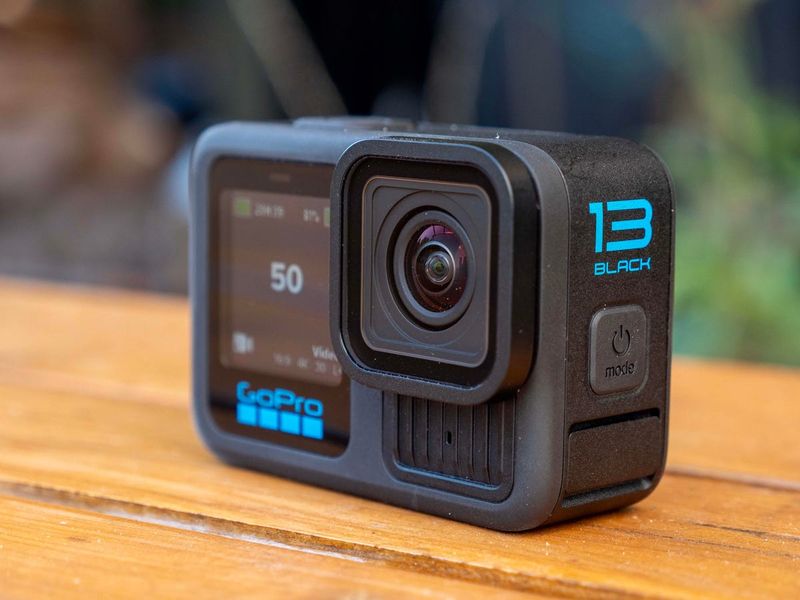
When you want to hit the trail without overthinking your setup, the Hero 13 Black is your go-to companion. Magnetic mounting makes it effortless to stick on helmets, poles, or straps, while Wi-Fi 6 speeds up those post-hike uploads dramatically.
Recording in 5.3K at 60 frames per second or 4K at a silky 120 fps gives you gorgeous slow-motion options for waterfall moments. The swappable lens mods—Ultra Wide, Macro, and Anamorphic—let you experiment with creative shots without hauling extra cameras. Best of all, it’s fully waterproof straight out of the box, so river crossings won’t stress you out.
G-Log and 10-bit color capture mean serious editing flexibility once you’re home. Plus, the bigger battery outlasts the Hero 12, keeping you rolling longer on those sunrise-to-sunset treks.
2. DJI Osmo Action 5 Pro — longer battery, deeper waterproofing
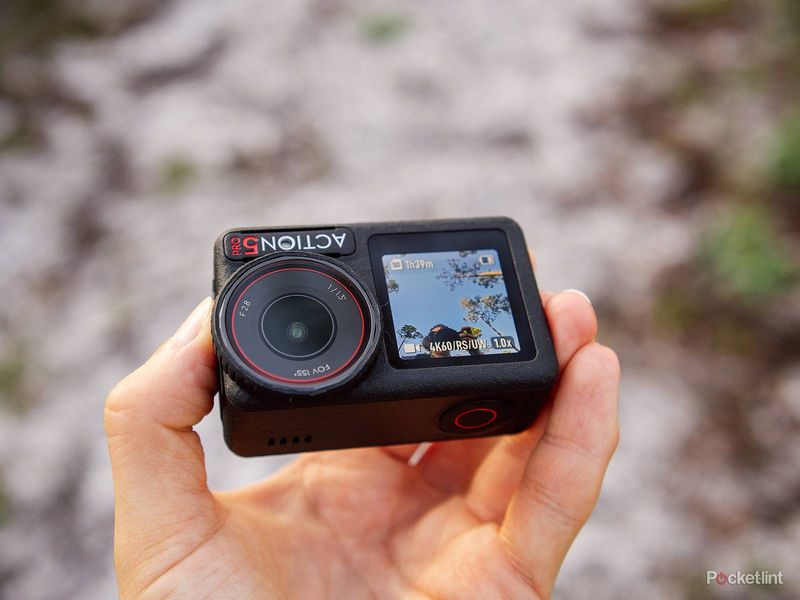
Rain, snow, or unexpected stream dunks? The Action 5 Pro shrugs them all off with 20-meter waterproofing and freeze-proof construction. Its 1/1.3-inch sensor pulls in more light than smaller chips, so dawn and dusk footage looks surprisingly clean.
Subject-tracking keeps you centered in the frame even when you’re scrambling over boulders, and 4K at 120 fps—including a 4:3 aspect ratio—gives flexibility for vertical edits or cinematic crops. DJI claims up to four hours of runtime at 1080p/24, which is genuinely impressive for all-day hikes.
Compatibility with DJI’s wireless mics is a nice bonus if you want crisp narration without fumbling with cables. Weather credentials here are top-notch, making it a standout for unpredictable alpine conditions.
3. Insta360 X4 — 360° “set it and reframe later”
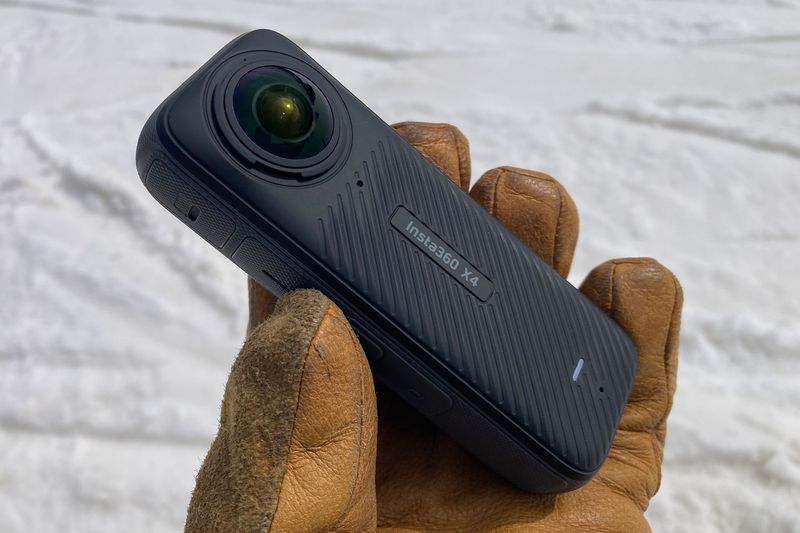
Ever wish you could capture everything around you and decide later which view was best? That’s the magic of the X4. Shooting 8K at 30 fps in full 360 mode means you’ll never miss a breathtaking ridge line while you’re busy watching your footing.
Removable lens guards are a lifesaver on rough terrain—scratch one, swap it out, and keep rolling. The newer battery design handles longer shoots, and when you don’t need the full sphere, single-lens 4K/60 mode works like a traditional action cam.
Reframing in post turns a single take into multiple angles, perfect for storytelling without lugging tripods. It’s a creative powerhouse that weighs next to nothing in your pack.
4. GoPro Max 2 — rugged 8K 360 with replaceable lenses
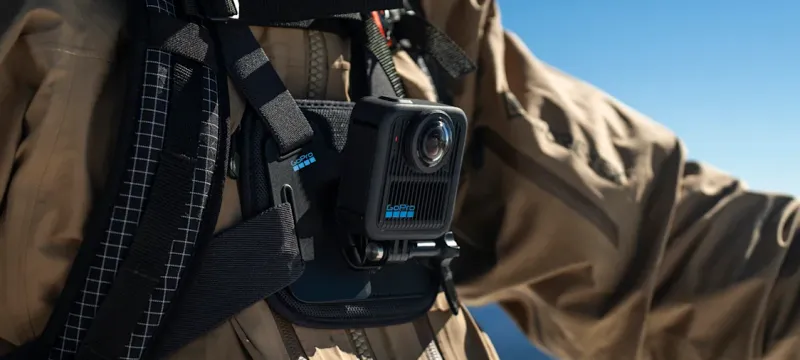
GoPro’s answer to 360 shooting arrives with serious specs: true 8K at 30 fps and 5.6K at 60, both in 10-bit GP-Log for pro-level color grading. Swappable lens covers mean dusty alpine paths won’t ruin your day—just pop on fresh protection.
Built-in GPS tags your footage with location data, handy for remembering exactly where that epic vista was. Launched around $499, it’s priced competitively for the durability you’re getting. Daylight performance is stellar, making it ideal for bright mountain mornings.
If you already live in the GoPro ecosystem, the Max 2 slots right in with familiar mounting and editing workflows. Ruggedness meets cutting-edge resolution here.
5. DJI Osmo Pocket 3 — featherweight gimbal stabilization
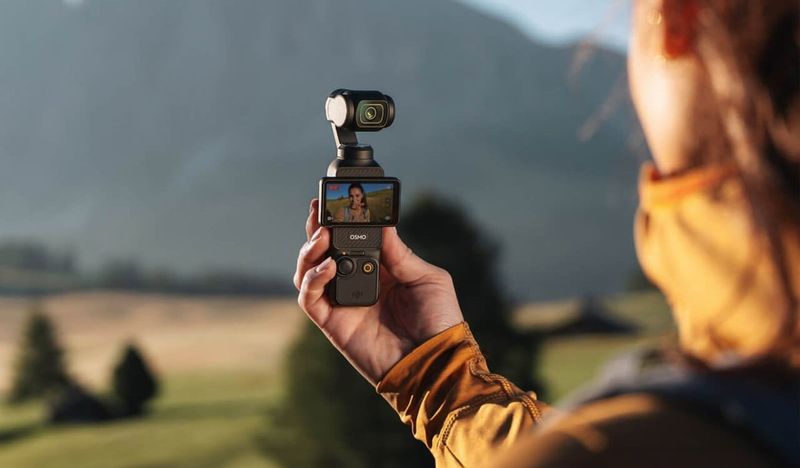
Smooth, cinematic footage usually demands bulky gimbals, but the Pocket 3 shrinks that magic into a device smaller than a water bottle. Its 1-inch sensor captures rich detail, and the mechanical 3-axis gimbal irons out every footstep wobble.
Recording 4K at 120 fps gives you silky slow motion for dramatic ridge-walk sequences. Battery life hits around 166 minutes under ideal conditions, enough for a solid afternoon shoot. The tiny footprint means it slips into a jacket pocket without fuss.
One big caveat: it’s not waterproof, so stash it when the skies open up. For dry-weather hikers chasing buttery-smooth clips, though, it’s nearly unbeatable.
6. Insta360 Ace Pro 2 — pocket action cam that reaches 8K
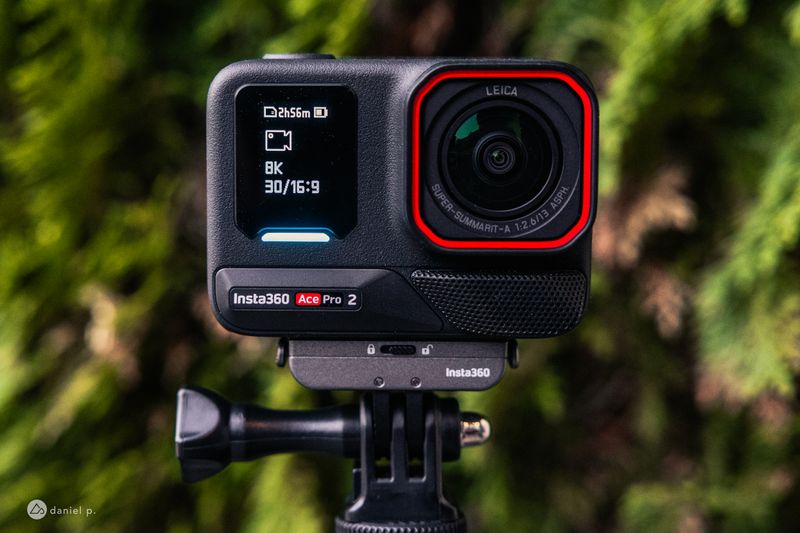
Craving higher resolution than GoPro without the 360 workflow? The Ace Pro 2 delivers 8K at 30 fps in a conventional action-cam body. That 1/1.3-inch sensor pulls in plenty of light, and the even larger flip screen makes framing selfies or vlog segments effortless.
The 2024 refresh kept the sensor philosophy that made the original Ace Pro popular while bumping up usability. Sweeping vistas get the pixel count they deserve, and the form factor feels instantly familiar if you’ve used any action cam before.
It’s a strong middle ground between traditional and 360 shooting, perfect for hikers who want maximum detail without reframing hassles.
7. Insta360 Ace Pro — Leica-tuned glass, great low light
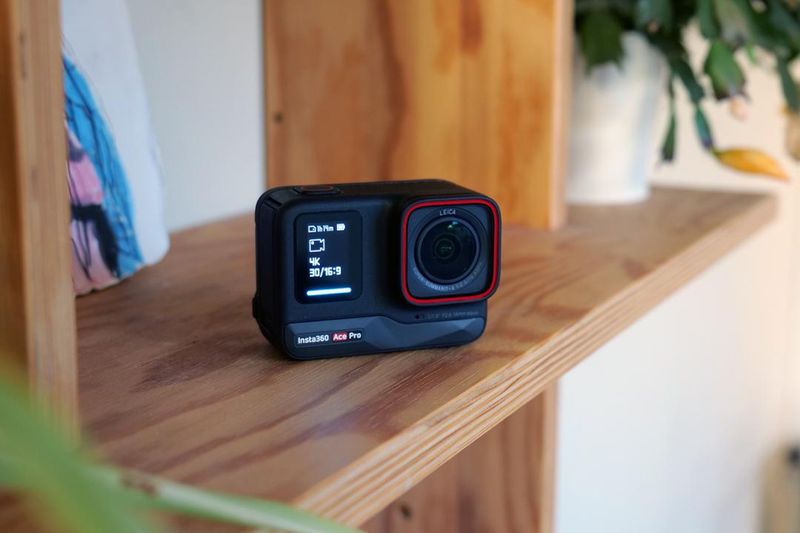
Co-engineered with Leica, the original Ace Pro brings optical pedigree to the action-cam world. That partnership shows in color rendering and sharpness, especially when golden hour fades and you’re still pushing toward camp.
The 1/1.3-inch sensor is larger than most competitors, soaking up available light for cleaner dusk footage. A flip screen simplifies vlogging on the move, and robust 4K at 120 fps handles fast action beautifully. It’s still a terrific buy even with newer models on the shelf.
If low-light performance matters—think forest trails or overcast days—the Ace Pro punches above its weight class.
8. Insta360 Go Ultra — the new thumb-sized champ

For hikers obsessed with cutting pack weight, the Go Ultra is a revelation. Barely bigger than your thumb, it records 4K at 60 fps and mounts magnetically almost anywhere—hat brim, shoulder strap, tent pole.
Battery life stretches up to 70 minutes in-camera or around 200 minutes with the Action Pod, enough for multi-day routes without constant recharging. MicroSD support means you’re not stuck with limited internal storage, a huge upgrade for long treks.
Hands-free capture lets you focus on navigation or scrambling while the camera rolls. It’s the ultimate set-it-and-forget-it tool when every ounce counts.
9. Insta360 Go 3S — ultralight budget option

Even lighter on your wallet than the Ultra, the Go 3S still delivers 4K video—a step up from the older Go 3. The Action Pod extends runtime significantly, making it practical for time-lapses of cloud-swept peaks or sunrise sequences.
It’s smaller and cheaper, which means some trade-offs in battery and features, but the core experience remains solid. Magnetic mounting keeps setup quick, and the compact form disappears into any pocket or pouch.
If you’re new to trail videography or just want a backup camera that won’t break the bank, the 3S is a smart entry point with real capability.
10. OM System Tough TG-7 — “indestructible” pocket camera

River crossings, winter storms, accidental drops onto granite—the TG-7 takes it all in stride. Waterproof to 15 meters, freeze-proof down to –10 °C, and both shock- and crush-proof, this pocket shooter is built for punishment.
It films 4K at 30 fps and 1080p at 120 fps, covering your bases for standard and slow-motion clips. The compact size means it fits in a cargo pocket, ready to pull out when conditions turn gnarly.
If your routes include sketchy weather or technical terrain, the TG-7 is the one camera you can genuinely drop, dunk, and keep shooting without a second thought.
11. OM System OM-5 — tiny, weather-sealed mirrorless with great IBIS
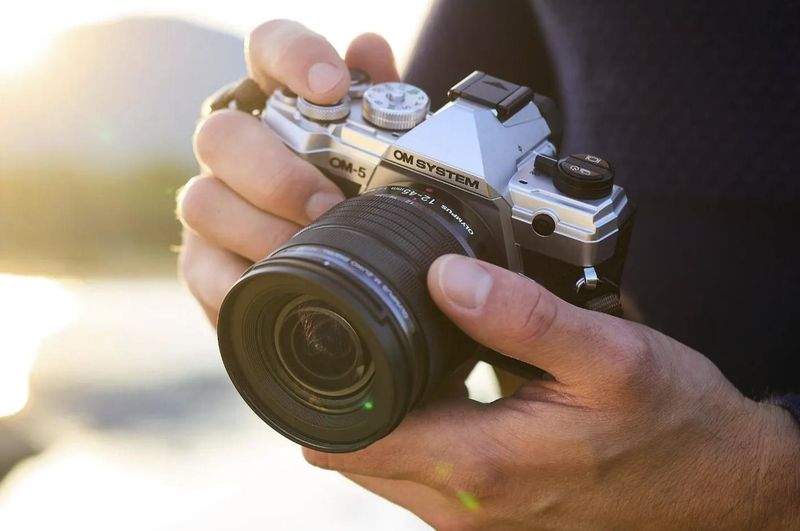
Not every hiker wants an action cam—some crave the flexibility of interchangeable lenses without hauling a full-frame beast. The OM-5 nails that balance with IP53 weather sealing and freeze resistance baked in.
Five-axis in-body stabilization rated up to 6.5 stops means handheld video stays remarkably steady, even on uneven ground. It shoots 4K video and excels at stills too, so you’re covered whether you’re filming a ridge walk or capturing a sunrise panorama.
The micro four thirds sensor keeps weight down, and the lens ecosystem offers compact, lightweight glass perfect for backpacking. It’s a superb hybrid for video-and-photo enthusiasts.
12. Panasonic Lumix G9 II — micro four thirds workhorse
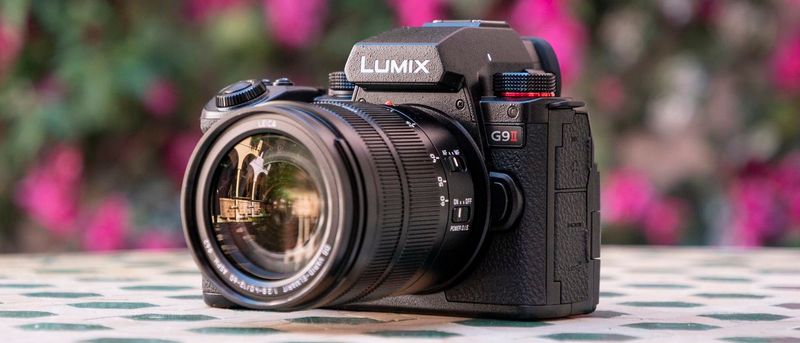
The G9 II is heavier than the OM-5, but it earns that weight with class-leading stabilization—up to 7.5 stops when paired with a stabilized lens. Weather sealing keeps moisture and dust out, and the build quality inspires confidence on multi-day treks.
Video options include 5.8K open-gate and 4K at 120 fps, plus robust codecs for serious color work. Pro controls feel intuitive once you’re familiar, making manual adjustments quick even with gloves on.
If you want a do-everything trail camera that handles both documentary-style filming and landscape stills without compromise, the G9 II is a brilliant choice.
13. Sony a6700 — compact APS-C with excellent video AF & IBIS
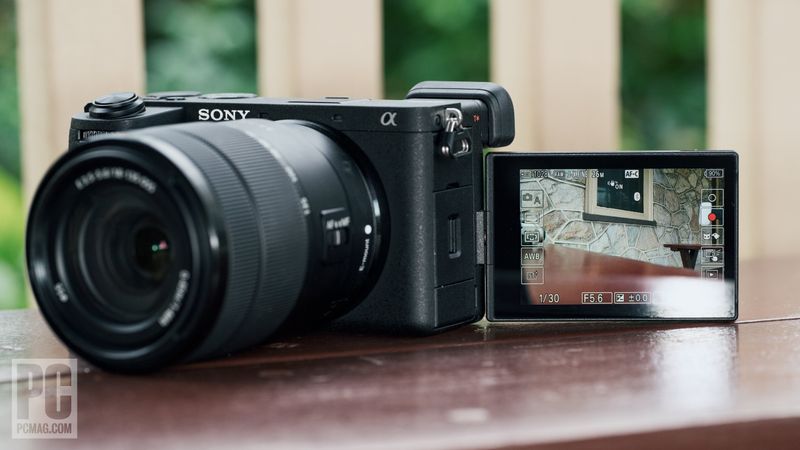
Sony’s latest a6-series finally adds five-axis in-body stabilization, a long-awaited upgrade that makes handheld hiking footage far smoother. The AI Processing Engine sharpens autofocus tracking, so moving subjects—wildlife, fellow hikers—stay locked in.
Oversampled 4K video looks crisp, and the APS-C sensor strikes a nice balance between image quality and body size. Sony’s E-mount lens ecosystem includes plenty of lightweight primes and zooms ideal for backpacking.
The a6700 stays hike-friendly without sacrificing serious video chops, making it a top pick for travelers who want pro features in a compact package.
14. Fujifilm X-T5 — high-res stills, 6.2K/30 video, and strong IBIS

Fujifilm’s classic body styling hides cutting-edge internals: a seven-stop IBIS system and 6.2K video capture at 30 fps. Weather sealing protects against trail dust and surprise showers, and the tactile dials make adjustments satisfying.
High-resolution stills mean you can pull frame grabs from video or shoot dedicated landscape photos without switching cameras. The X-T5 is a favorite among hikers who refuse to compromise on image quality, even when going lightweight.
Pair it with a compact prime like the 23mm f/2 or 35mm f/2, and you’ve got a trail-ready setup that punches well above full-frame weight.
15. Fujifilm X-S20 — budget-friendly hybrid with great battery
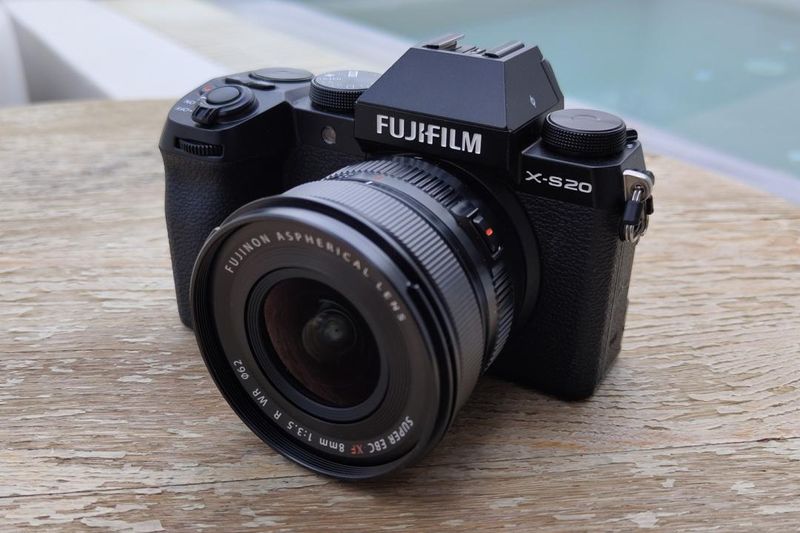
The X-S20 delivers much of what makes the X-T5 great—IBIS, 6.2K at 30 fps, weather sealing—but in a slightly smaller body and at a friendlier price. Battery life outperforms many competitors, a real advantage on long trail days.
Vlog mode simplifies settings for talking-head segments, and the flip screen makes self-shooting painless. Pair it with the compact 18–55mm kit lens or a small prime, and total trail weight stays manageable.
It’s an excellent hybrid for hikers who want solid video and stills without the flagship price tag or bulk.



